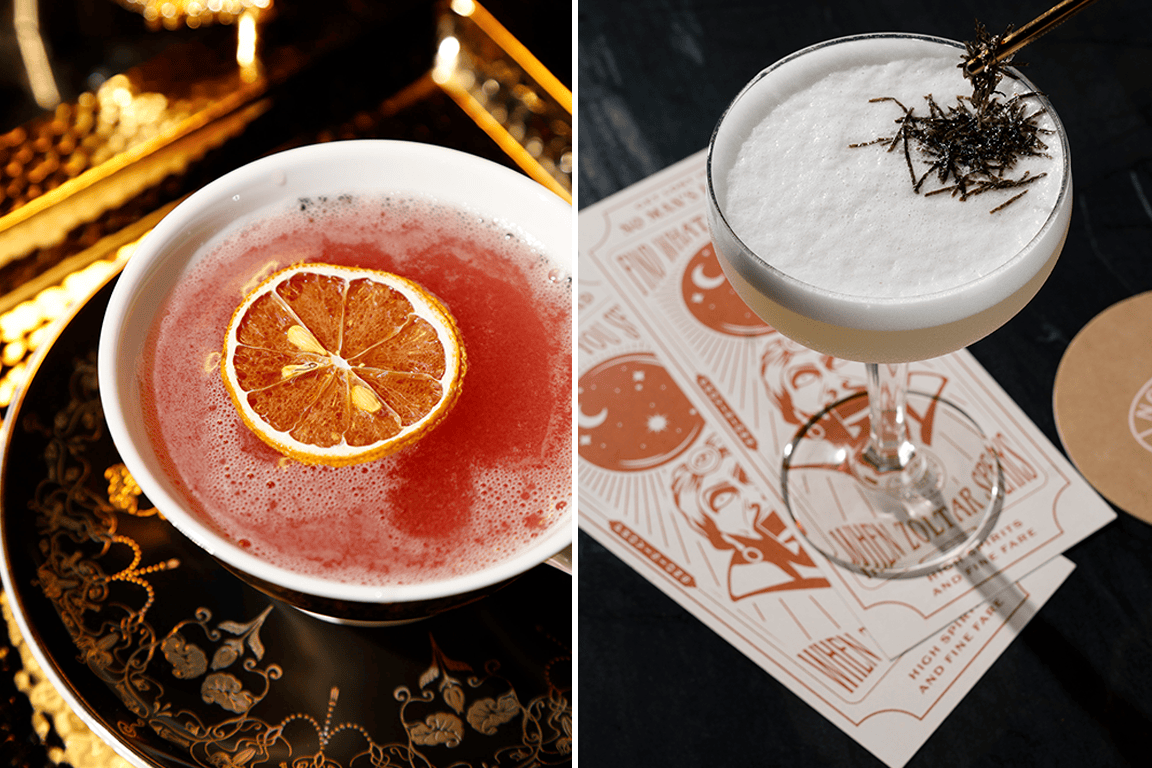
5 Ways to Bring Asian-Inspired Accents to Your Beverage Menu
Unexpected textures and flavors bring modern spins to beverage development
5 Ways to Bring Asian-Inspired Accents to Your Beverage Menu
Unexpected textures and flavors bring modern spins to beverage development
By Rob Corliss
February 15, 2024
By Rob Corliss
February 15, 2024
The beverage menu is proving to be a winning platform for Asian ingredients, driven in part by younger consumers’ embrace of coffee and tea concepts from this vast region, as well as the interest in spirits such as Korean soju and Japanese whisky. Building on the fast-paced flavor momentum, beverage developers have an opportunity to delve deeper into the myriad styles and flavors of countries across Asia.
Incorporating Korean, Japanese, Thai, Vietnamese, Filipino and Chinese components offers guests a gateway into new flavor experiences, but without straying too far out of their comfort zones. Plus, these Asian-inspired elements align with 2024 beverage trends of spicy fruit twists, unconventional savory flavors, natural colors and textural indulgence.
Here, we outline opportunities across five categories, with each featuring trend-forward action ideas to pique guest interest and expand your menu’s global reach.
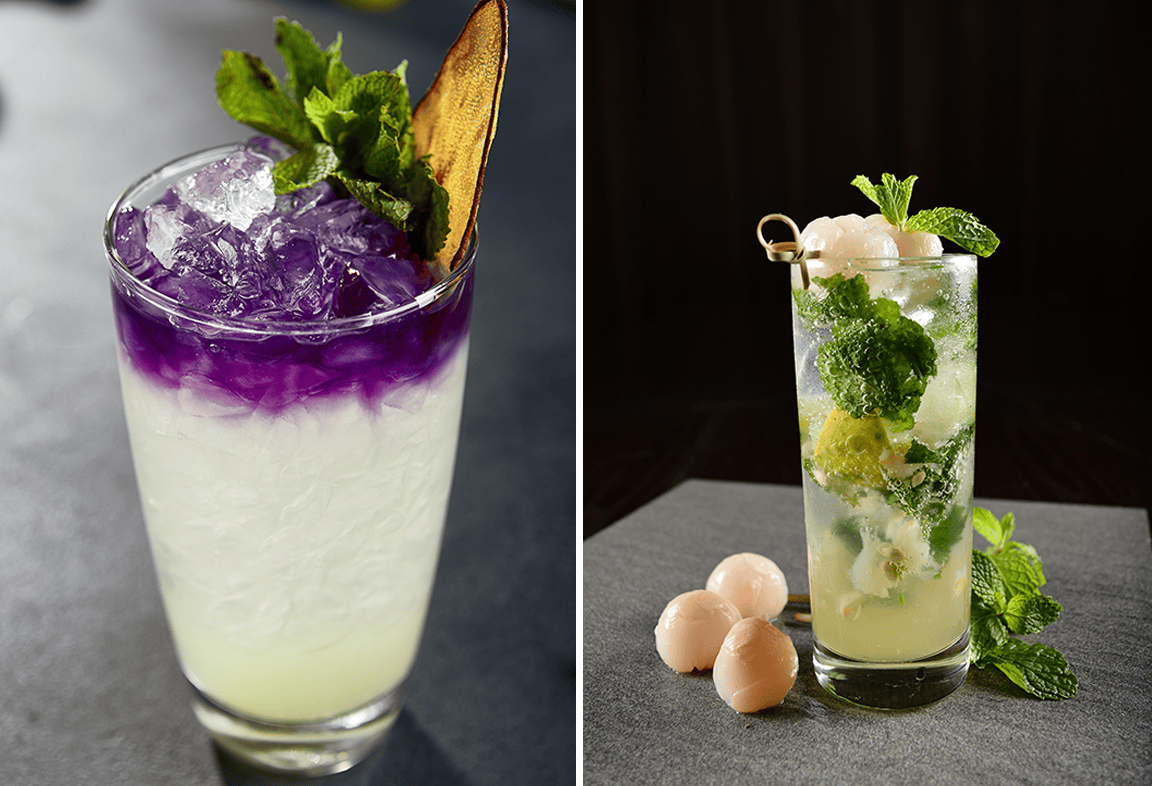
Emerging flavors make for intriguing beverages like a lemonade with ube float (left) and a Lychee Mint Fizz Mocktail (right).
1
A Gamut of Flavor Profiles
Like the many countries comprising Asia, its flavor profiles are far from a monolith. Instead these tasting notes range from sweet and fruity to savory, spicy and even a bit bitter. Many of the region’s featured ingredients complement citrus-based cocktails, making them well-suited to more familiar recipes. And for consistency and streamlined throughput, operators can employ syrup versions of many of these flavors.
Furthermore, Asian flavors can be applied to the next wave of dessert-inspired flavors that are so popular among younger generations (think: five-spice brownie batter coffee).
FLAVORS TO EXPLORE
- Bright pops of flavor and color from lemongrass, lychee, yuzu, ube, calamansi
- Tea varietals and styles, such as lapsang souchong, hojicha, oolong, matcha, Hong Kong milk tea, Thai tea
- Popular coffee builds, such as Vietnamese, dalgona, yuanyang
- Unique, savory notes, such as tamarind, soy, sesame, cabbage broth (yes, it’s a thing)
TRY THIS
- Iced Ube Milk Tea: strong black tea + gingered ube syrup + whole milk + sweetened condensed milk + ice
ON THE MENU
Chai’s Story: Toki Whisky, ginger liqueur, fresh orange and lemon juice, jasmine green tea, muddled lychee
—Chai, New York
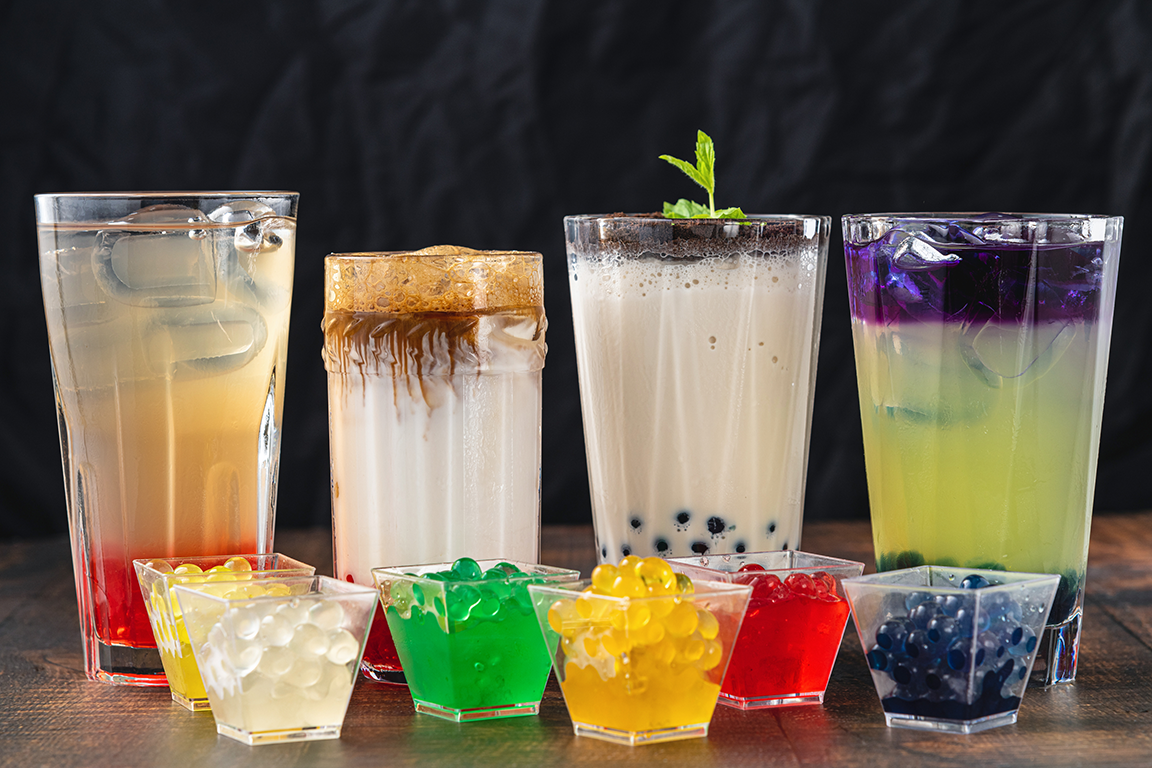
Boba has opened the door to a wide variety of textural additions. Beyond the classic tapioca pearls, squishy accents include fruit jelly, ice jelly, popping boba and more.
2
Unexpected Textures
Multilayered and unexpected textures are attracting consumers in search of a one-of-a-kind mouthfeel. And on this front, Asian-inspired beverages are leading the pack. Whether squishy, frothy or crunchy, these textures bring an element of sensory fun and are a critical component to the beverage experience.
TEXTURES TO EXPLORE
- “Squishies,” such as fruit jellies, brown sugar jelly, bingfen (ice jelly) and boba (crystal boba, popping boba, traditional tapioca boba)
- Flavored ice, carbonation styles, muddled fruit
- Flavored aromatic creams/foams, miso or tamari-flavored aquafaba
- Crispy toppings like cereal/puffed rice, freeze-dried fruit, rose petals
TRY THIS
- Shaken Mandarin Smoky Palmer: lapsang souchong tea + lemongrass-lemonade + chopped mandarin oranges + brown sugar cubes + ice
ON THE MENU
Watermelon Pandan: watermelon slushie, fresh watermelon, agar boba, pandan creamy foam, pandan leaves
—Jell & Chill, San Gabriel and Cupertino, Calif.
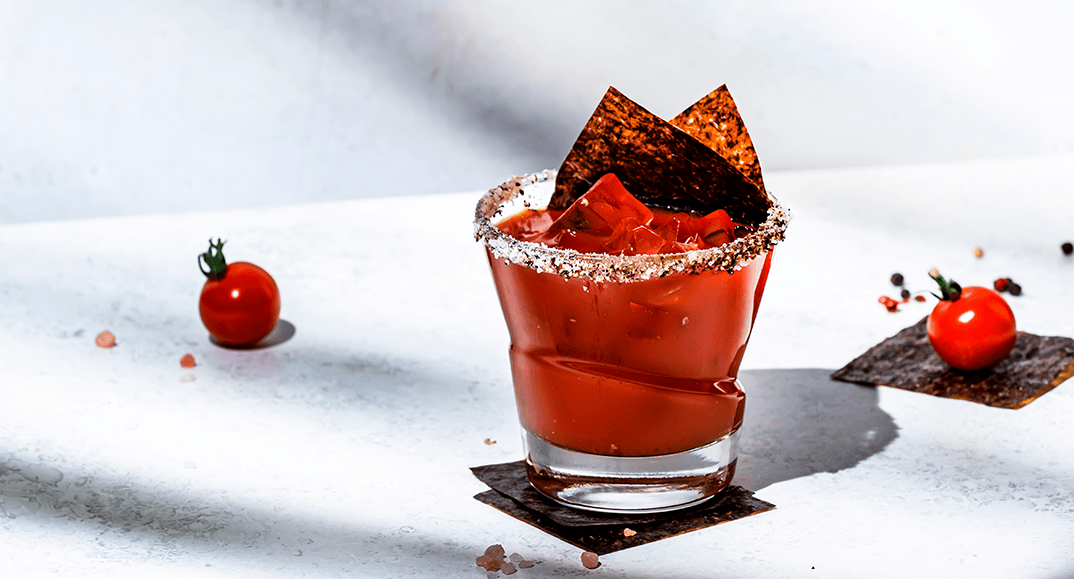
A brunchtime favorite takes a global spin in this Bloody Miso, with a garnish of nori and a togarashi-salt rim imbuing savory, Far East flavor.
3
Extra-Credit Garnishes
Garnishes, including spices, fresh produce and even sweets, bring another layer of sensory appeal to make a drink especially memorable. These finishing flourishes can be nestled within the beverage or served outside. Either way, thoughtful garnishing touches add personalization and intrigue.
GARNISHES TO EXPLORE
- Glass rimmers, such as Chinese five-spice powder, Sichuan peppercorns, furikake, togarashi
- Treatments on fruit/vegetable slices and slivers
- Fortune cookies, flavored lollipop stir sticks in a variety of shapes
TRY THIS
- Thai Peanut Colada (non-alcoholic): Thai tea (orange) + peanut butter syrup + coconut milk + lime juice + ice + charred Thai chile and pineapple slivers
ON THE MENU
The Blackbird: Skyy vodka, Amaro Lucano, chai tea, cold brew coffee, vanilla cream, activated charcoal, chocolate fortune cookie
—Blackbird Modern Asian, Jupiter, Fla.

When exploring the world of Asian spirits like Korean soju (pictured), menu developers can serve the drinks neat or integrate them into more familiar libations.
4
Getting into the Spirit
Just as consumer affection for tequila and whiskey expanded to mezcal and bourbon, respectively, so too can interest in sake broaden to include more Asian spirits. The many variations can stand on their own cultural and flavorful merits or be integrated into mainstream combinations.
SPIRITS TO EXPLORE
- Korean soju
- Japanese whisky, shochu, umeshu, sake
- Chinese baijiu
TRY THIS
- Baijiu Old Fashioned: light aroma baijiu + strawberry-rose syrup + bitters + orange twist
ON THE MENU
Missionary’s Downfall Frozen: sweet potato shochu, three-rum blend, peach, shiso, mint, honey, pineapple, lime
—Majordomo, Los Angeles
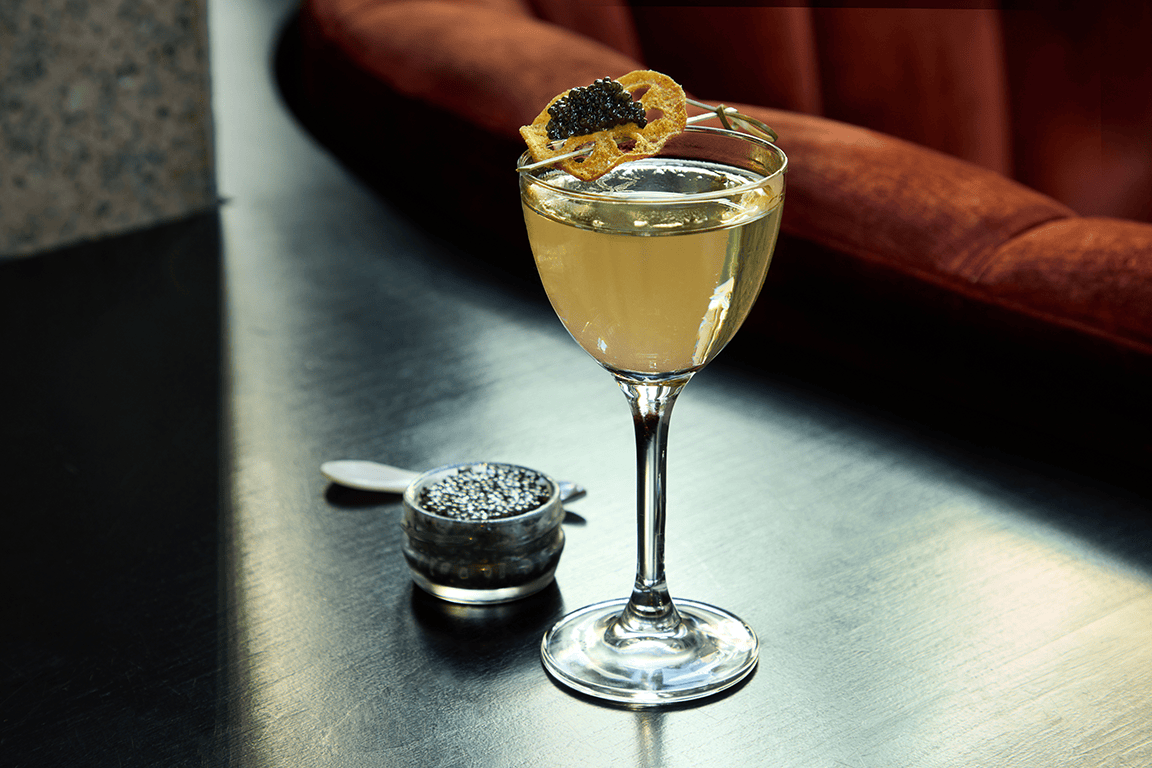 Photo Credit: Nader Khouri
Photo Credit: Nader Khouri In San Francisco, fitting with its izakaya theme, Pabu’s namesake martini is a blend of dry gin, vermouth, plum bitters, umeboshi, with an optional caviar upgrade.
5
Worldly Cocktail Culture
One way to engage evolving guest tastes—and evoke fond memories—is through creative, Asian-leaning twists on classic cocktails, tempting customers’ curiosity with delightful renditions. Opt for expertly curated beverages that pique guest curiosity, rather than extravagant novelties. Brunch could be an ideal daypart to introduce a touch of this new nostalgia via a sophisticated sipper.
CLASSICS TO EXPLORE
- White Russian with Thai milk tea
- Grasshopper with pandan or matcha
- Margarita with tamarind
- Martini with sake
- Moscow Mule with soju and cucumber
- Mojito with lychee
- Bloody Mary with gochujang
TRY THIS
- Tokyo Gria: ginjo sake + plum wine + lychee purée + diced pear + silky ginger foam topper
ON THE MENU
Gin-erational Trauma: lemongrass gin, yuzu, tonic
—Sap Sua, Denver, Colo.
 Photo Credit: Nader Khouri
Photo Credit: Nader Khouri In San Francisco, fitting with its izakaya theme, Pabu’s namesake martini is a blend of dry gin, vermouth, plum bitters, umeboshi, with an optional caviar upgrade.
About the Author
![]() Rob Corliss is a three-time James Beard House guest chef with more than 30 years of experience that includes running world-class hotels, launching new concepts, working in top marketing agencies and owning the culinary consultancy ATE (All Things Epicurean) since 2009. Based in Nixa, Mo., ATE has an energizing passion focused on flavor innovation and is dedicated to connecting people to their food, environment and wellness. Rob is also a regular contributor to Flavor & The Menu.
Rob Corliss is a three-time James Beard House guest chef with more than 30 years of experience that includes running world-class hotels, launching new concepts, working in top marketing agencies and owning the culinary consultancy ATE (All Things Epicurean) since 2009. Based in Nixa, Mo., ATE has an energizing passion focused on flavor innovation and is dedicated to connecting people to their food, environment and wellness. Rob is also a regular contributor to Flavor & The Menu.







